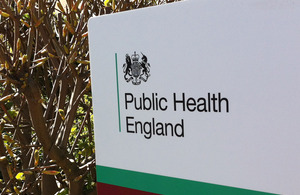Five million people at high risk of Type 2 diabetes
PHE data the most up to date, accurate and robust available.

Five million people in England have blood sugar levels indicating a high risk of developing Type 2 diabetes, according to a new report published today by Public Health England (PHE).
The report, compiled by PHE’s National Cardiovascular Health Intelligence Network (NCVIN), provides the most accurate and robust estimate of how many people over 16 in England have blood sugar levels in a range indicating a high risk of developing Type 2 diabetes, otherwise known as non-diabetic hyperglycaemia.
It was commissioned by the NHS Diabetes Prevention Programme (NHS DPP), which will support people in reducing their risk of developing Type 2 diabetes by helping them lose weight, be more active and have a healthier diet.
The new estimate further underlines the need to act on Type 2 diabetes, especially as it already results in 22,000 early deaths and costs the NHS £8.8billion every year.
An evidence review also published today by PHE shows programmes similar to the NHS DPP can be successful in preventing 26% of people at high risk of Type 2 diabetes from going on to develop the condition. People supported by diabetes prevention programmes lose on average 1.57kg more weight than those not on a programme aiming to significantly reduce diabetes risk.
Both reports have shaped what the NHS DPP will offer at least 9 months of information, support, group and one-to-one sessions on weight loss, physical activity and diet. Practitioners, clinicians, academics and the public are currently being consulted on a proposed outline of the programme.
Consultation responses will further inform the programme, with a phased national rollout starting in 2016.
Duncan Selbie, Chief Executive of PHE, said:
We know how to lower the risk of developing Type 2 diabetes: lose weight, exercise and eat healthily, but it’s hard to do it alone. PHE’s evidence review shows that supporting people along the way will help them protect their health and that’s what our prevention programme will do.
Professor Jonathan Valabhji, National Clinical Director for Diabetes and Obesity, NHS England said:
There are too many people on the cusp of developing Type 2 diabetes and we can change that. The growing body of evidence makes us confident that our NHS Diabetes Prevention Programme will reduce the numbers of those at risk going on to develop the debilitating disease.
Barbara Young, Chief Executive of Diabetes UK, said:
Having high blood glucose levels significantly increases your risk of developing Type 2 diabetes, which is a serious health condition which affects 2.9 million people in England, and can lead to devastating complications such as blindness, amputations and stroke, and ultimately early death.
This is why it is really important that people at high risk of developing Type 2 diabetes are given evidence-based support to reduce their risk. As well as helping to reduce the human cost of Type 2 diabetes, this would also go a long way to helping to reduce costs to the NHS.
The NHS spends 10% of its entire budget managing diabetes and unless we get better at preventing Type 2 diabetes this figure will rise to unsustainable levels.
The data on non-diabetic hyperglycaemia is broken down by local authority (LA) for the first time, ranging from 8.5% of people in Brighton and Hove to 14% in Harrow. Higher rates are found in areas with large ethnic minority populations or older populations, or both: the groups traditionally at higher risk of Type 2 diabetes.
Lifestyle factors, including weight, physical activity levels and diet, are important like the inherent factors of ageing and ethnic background in determining the risk of developing Type 2 diabetes. The NHS DPP will focus on providing support to participants on changing their behaviour in these areas to reduce their risk.
According to the evidence review, programmes more aligned with the NICE guidance on preventing or delaying the onset of Type 2 diabetes help people lose on average 3kg more weight and significantly reduce blood sugar levels.
Aside from reducing incidences of Type 2 diabetes, the NHS DPP also aims to reduce the life-changing complications associated with the disease, like heart, stroke, kidney, eye and foot problems, and reduce costs to the NHS in the long term.
People identified with a high risk of developing Type 2 diabetes, either through an NHS Health Check or through an existing blood test result will be offered a place on the NHS DPP when it launches in 2016.
UK Health Security Agency press office
10 South Colonnade
London
E14 4PU
]
Background
The report on non-diabetic hyperglycaemia was produced by the National Cardiovascular Health Intelligence Network (NCVIN), a group of cardiovascular experts co-ordinated by PHE
Using 5 years’ of the latest available Health Survey for England data, the new analysis gives the programme the most accurate and up to date picture of how many people have non-diabetic hyperglycaemia.
The report includes local authority breakdown.
The PHE review collated studies conducted since the highly regarded studies of the late 1990s and early 2000s in the US, Finland, China, India and Japan, including as yet unpublished, pragmatic, “real world” diabetes prevention solutions. It updated the 2012 review underpinning the NICE guidelines on preventing Type 2 diabetes in high risk groups.
The PHE evidence review is available from the GOV.UK website.
The NHS Diabetes Prevention Programme is a joint commitment from NHS England, Public Health England and Diabetes UK, to deliver evidence-based behaviour change interventions at scale to people at high risk of developing Type 2 diabetes to support them in reducing their risk
The NHS DPP has used the PHE evidence review and NCVIN data to develop a core components framework, currently out for consultation
NICE published guidelines on identifying people at high risk of developing Type 2 diabetes and the provision of effective interventions for them